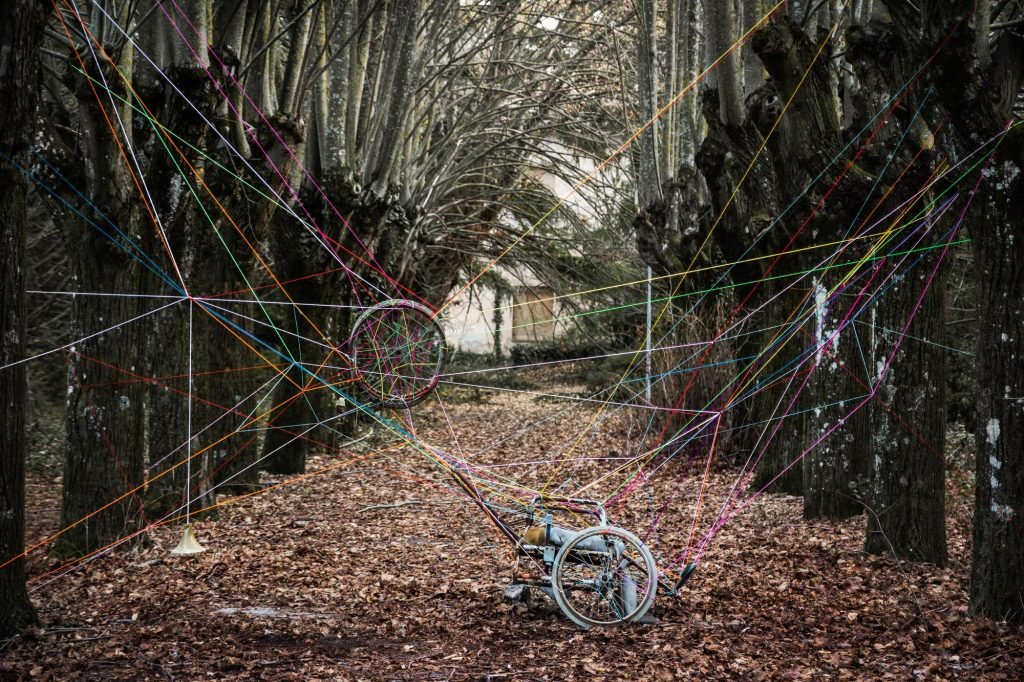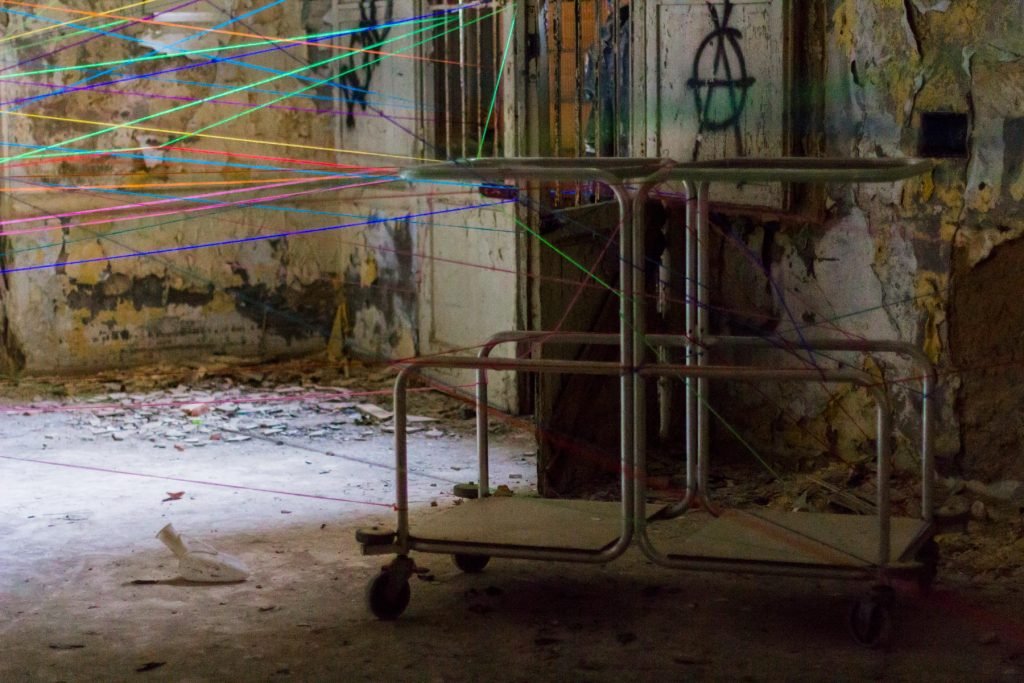Eleonora Gugliotta’s Ambienti project is characterized by a series of photographs of different places she delicately appropriates to create her installations and perpetuate her research. With extreme and at times liturgical caution, she makes us look at specific places of abandonment that characterize the Italian landscape.
Every portion of the landscape or trace of life saturated with content is suspended, stuck, perpetuated in space to refract the sound and melody of times past. At the same time, the objects buried in the rooms are woven together and are thus brought back to life to arrest – even if for just a limited time – their fate that over time would evidently have relegated to an infamous space of memory, until they are lost. The manipulation of long, thin and flexible elements that the artist uses to suspend objects with recalls the character of a ritual and evokes one of the oldest construction techniques used by humanity.
Through the technique of interlacing these elements become one, each supports the other and the whole acquires new and imaginative properties and performances. The gesture to which Eleonora refers to is not merely an expression of purpose in so far as its action implies and contains reflections on contemporary culture.
The installations entitled #10 Charcot, Volterra and #10 Neurological, Volterra, for example, are made within the spaces of the former psychiatric hospital of Volterra. The closing down of asylums in Italy lasted, with various extensions, from 1978 until 31 December 1998, but its disquieting reality has not always been possible to dismantle. Forty years after the Basaglia law came into effect, the artist reflects on these spaces that have become very rich containers of our human experience and, even more clearly, of the failed attempt to manage and “control”; madness. Psychiatry has in fact neglected the “subjectivity”; of the mentally ill, who were all “labeled”; by a single legitimated subjectivity: that of the doctor and his knowledge as a form of power. Franco Basaglia declared:
In us madness exists and is present as is reason. The problem is that society, to put it civilly, should accept both reason and madness. Instead, this society recognizes madness as part of the reason and reduces it to reason when there is a science that takes care of eliminating it. (1)
If, therefore, the more properly geopolitical aspect of state domination derives from and refers to the physical specificity of spaces, a corollary of reflections on the architecture of government domination and control is still necessary. The artist’s refined operation at the former psychiatric hospital allows us somehow to ask ourselves once again what the spaces of madness are and how much emotional charge can still be found in them. Just think of the well-known Oreste Fernando Nannetti to whom the artist dedicates his speech at the Charcot space and the neurological department of Volterra. Eleonora brings Foucault’s heterotopia back into vogue, being here and at the same time elsewhere as a possibility of identification between past and present, insinuates itself into the individual’s codes of conduct and gives us back the kind of things that we can seldom contemplate without questioning our own identity.
(1) Franco Basaglia, Conferenze brasiliane, 1979
–
website: Eleonora Gugliotta
Instagram: elli_elle
–
Text by: Simona La Neve
–
copyright © Eleonora Gugliotta, all rights reserved
–









